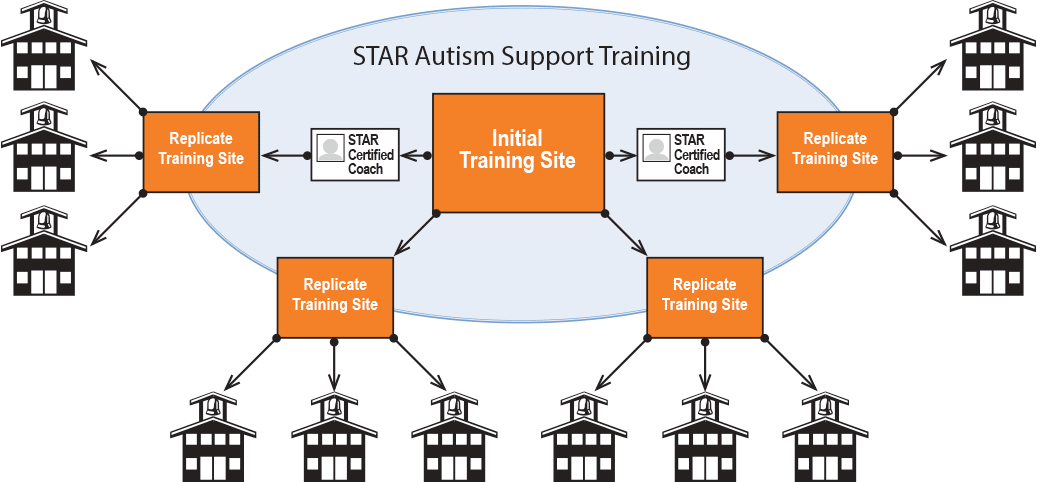Evidence-based Practices Districtwide
Implementing Evidence-based Practices Districtwide: How to Get There and Stay There
Consistency of instructional practices across grade levels and classrooms is essential for districts to create positive outcomes for students, communicate with parents, meet legal requirements and monitor student progress. Research studies have found that students with autism can learn communication, social, adaptive and academic skills when evidence-based strategies are combined with a research validated curriculum (Bacon, Bacon, Dufek, Schreibman, Stahmer, Pierce and Courchesne, 2014; Arick, Young, Loos, Falco, Krug and Johnson, 2003; Mandell, 2010, 2014). By implementing a consistent curriculum across the grade levels, teachers, administrators and parents are able to track student progress and ensure instructional goals are met. This is particularly important following summer breaks and when transitioning between grade levels.
A district-wide curriculum provides both staff and parents a road map focusing on student strengths, present levels of performace and short and long term goals. Curricula which includes both comprehensive assessment and lesson plans connected to the assessment is one of the most effective ways to ensure consistency of instructional practices for all students and provide the tools teachers need for success.

